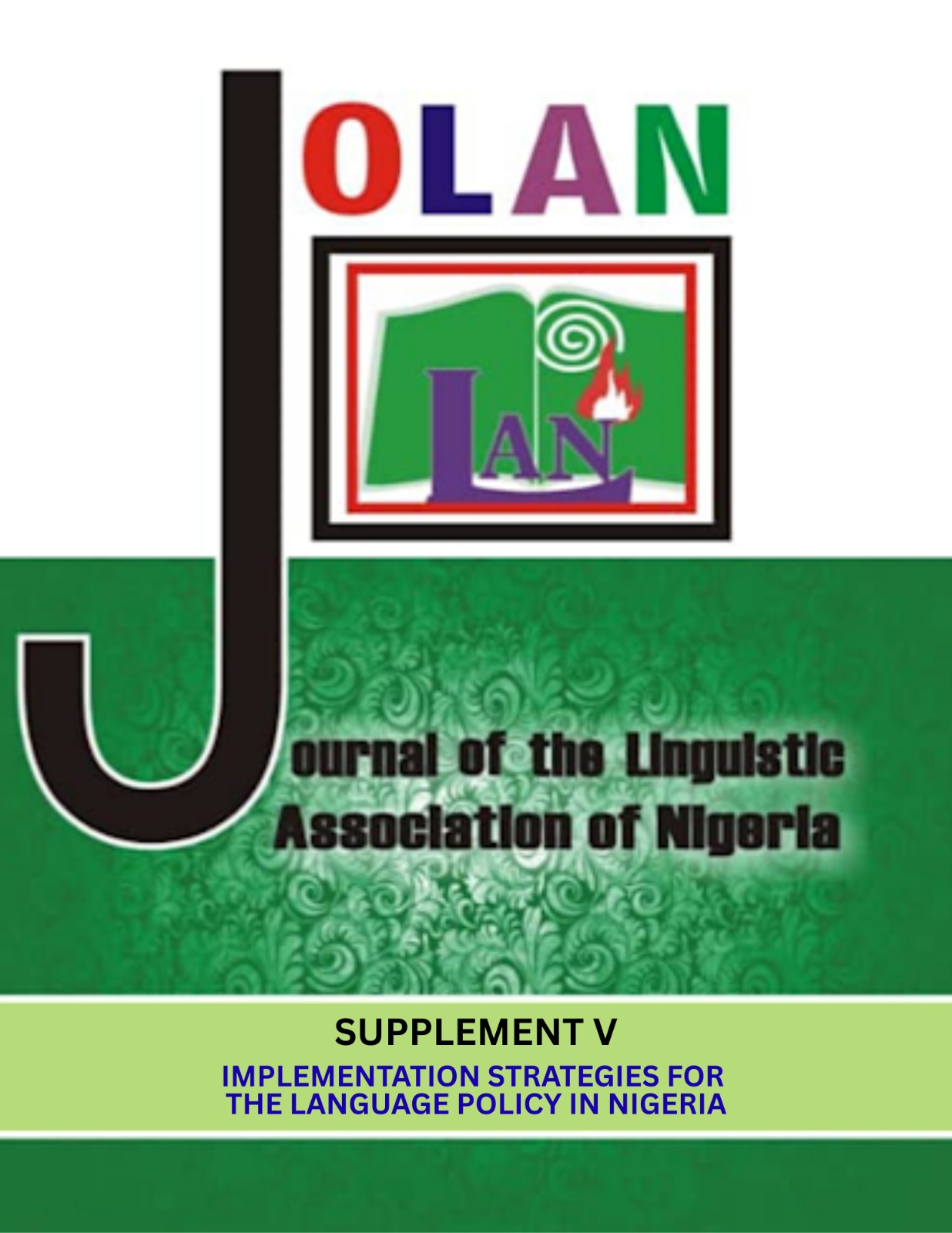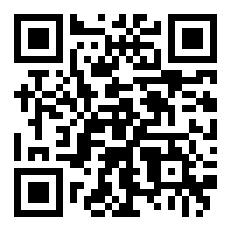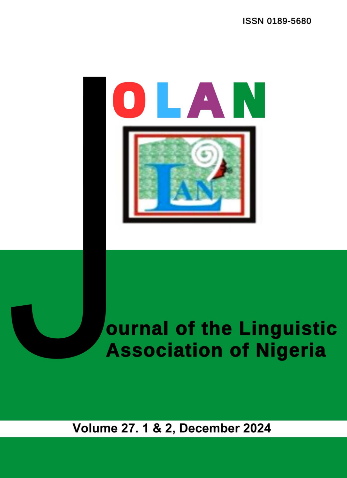A study of consonant distribution in Abureni phonology
DOI:
https://doi.org/10.60787/jolan.vol5no1.422Keywords:
Abureni language, consonant distribution, phonology, endangered languagesAbstract
The Abureni language is currently being documented to preserve it from extinction, having been identified as an endangered minority language in Nigeria. At present, the documentation of the language is still in its early stages, and there is a notable scarcity of literature on it. This study seeks to contribute to ongoing efforts by investigating and documenting the distribution of consonants in Abureni phonology. The Abureni alphabet consists of thirty-five letters, comprising twenty-five consonants and ten vowels. To analyze the language data, the study adopted the general theory of preferential attachment. Specifically, it aimed to identify the word positions of nineteen consonants and six consonant clusters in the Abureni alphabet. A random sample of words from various linguistic domains was collected and categorized into three positional clusters - word-initial, word-medial, and word-final - in order to determine the environments in which each consonant or consonant cluster occurs as an allophone. The analysis reveals that thirteen consonants and two consonant clusters occur only in word-initial and wordmedial positions, but not in word-final position. In contrast, six consonants and four consonant clusters appear across all three word-boundary positions. An important observation is that the occurrence of each consonant within word structures follows a distributional pattern governed by the sound system of Abureni.
References
Akari, A. N. 2014. Kpone D̠ed̠ia̠: O̠nu̠ A̠b̠ureni . Yenagoa: GFP Publishers Ent. & Grant Technologies.
Choudhury, M., Mukherjee, A., Basu, A., & Ganguly, N. 2006. Analysis and synthesis of the distribution of consonants over languages: A complex network approach. In Proceedings of the COLING/ACL 2006 Main Conference Poster Sessions (pp. 128–135). Sydney, Australia: Association for Computational Linguistics. Retrieved from https://aclanthology.org/P06-2017/
Daniel, C. E. 2017. A History of Iduma from Ancient Times. Port Harcourt: Onyoma Research Publications.
Eberhard, D. M.: Gary F. S.: & Fennig, C.D. (eds.). 2024. Ethnologue: Languages of the World. Twenty-seventh edition. SIL International. Online version: http://www.ethnologue.com.
Ebua, V. T. 2017. My Mother Tongue: Onu Ema Obagbony – Kugbo Book I. Yenagoa: Last Messenger Publication.
Etire, D. 2015. The Orthography of The Abureni Language. Port Harcourt: Onyoma Research Publications.
Etire, D. 2016. Ò̠̠nú̠̠ Áb̠ùrénì 1. Port Harcourt: Onyoma Research Publications.
Etire, D. 2023. A Wordlist of Abureni. Port Harcourt: Onyoma Research Publications.
Fuchs, S.: & Birkholz, P. 2019, August 28. Phonetics of Consonants. ResearchGate. DOI: 10.1093/acrefore/9780199384655.013.410
Galloway, B. D. 1993. A grammar of Upriver Halkomelem. University of California Publications in Linguistics. Hinton et al. (eds). Berkeley: University of California Press.
George, T. 2022.Types of Interviews in Research: Guide & Examples. Scribbr. https://www.scribbr.com/methodology/interviews-research/
Hofstad, R. van der. 2016. Preferential Attachment Models. In Random Graphs and Complex Networks (pp. 256–300). chapter, Cambridge: Cambridge University Press.
Linke, K.: & Oostendorp, M. van. 2015, December. Distribution of consonants in onset and coda positions. Taalportaal. Retrieved from
https://taalportaal.org/taalportaal/topic/pid/topic-14071570154535963. (accessed 17 January 2025).
Machu, F. X., Wang, R. J., Cheng, J. L., Cocks, J., & Wang, Q. A. 2023. A SystemIndependent Derivation of Preferential Attachment from the Principle of Least Effort. Entropy, 25(2), 305. https://doi.org/10.3390/e25020305
Marinakis, A. 2004. A preliminary description of consonant clusters in Upriver. Ubc.Ca. https://lingpapers.sites.olt.ubc.ca/files/2018/02/Marinakis_2004.pdf.
McCully, C. 2009. Consonants (3): distribution. In The Sound Structure of English: An Introduction (pp. 51–61). chapter, Cambridge: Cambridge University Press.
Netscribes. (2024, January 9). Human-centered research: The benefits of conducting face-to-face interviews for qualitative research. https://www.netscribes.com/benefits-of-conducting-face-to-faceinterviews-for-qualitative-research-methods/
Newton, G.: & Esling, J. 2015, July 1. Full IPA Chart. International Phonetic Association. https://www.internationalphoneticassociation.org/content/full-ipa-chart.
Paul, E.: Etire, D.: Edoghotu, S.: Ibote, O.: & Obolo, E. 2023. Partnership in Indigenous language documentation and advocacy: Experience from the Abureni Language Project. Journal of the Nigerian Languages Project, 4, 69–92. https://jnlp.com.ng/index.php/home/article/view/33.
Pouchoulin, G.: Fredouille, C.: Bonastre, J. F.: Ghio, A.: Marques, A.: & Giovanni, A. 2009, October 19. Are the unvoiced consonants relevant for dysphonia phenomenon observation? HAL Open Science. https://hal.archives-ouvertes.fr/hal-01619448.
Udoh, I. I. L. 2019. The Languages of Southern Nigeria. Uyo: Fruities’ Publication Ltd. UNESCO Ad Hoc Expert Group on Endangered Languages. 2003. Language Vitality and Endangerment. International Expert Meeting on the UNESCO Programme Safeguarding of Endangered Languages, Paris, 2003 [5].
UNESCO. https://unesdoc.unesco.org/ark:/48223/pf0000183699.
Yang, B. 2019. Phonological processes of consonants from orthographic to pronounced words in the Buckeye Corpus. Phonetics and Speech Sciences, 11(4), 55-62. https://doi.org/10.13064/KSSS.2019.11.4.055.
Yule, G. U. 1925. A mathematical theory of evolution, based on the conclusions of Dr. J C. Willis, F.R.S. Philosophical Transactions of the Royal Society of London. Series B, Containing Papers of a Biological Character, 213, 21–87. https://doi.org/10.1098/rstb.1925.0002
Zipf, G. K. 1949. Human Behavior and the Principle of Least Effort: An introduction to Human Ecology. (2012 Reprint of 1949 Edition). Boston: Addison-Wesley Press.
Downloads
Published
How to Cite
Issue
Section
License
Copyright (c) 2025 Journal of The Linguistic Association of Nigeria

This work is licensed under a Creative Commons Attribution-NonCommercial-ShareAlike 4.0 International License.














